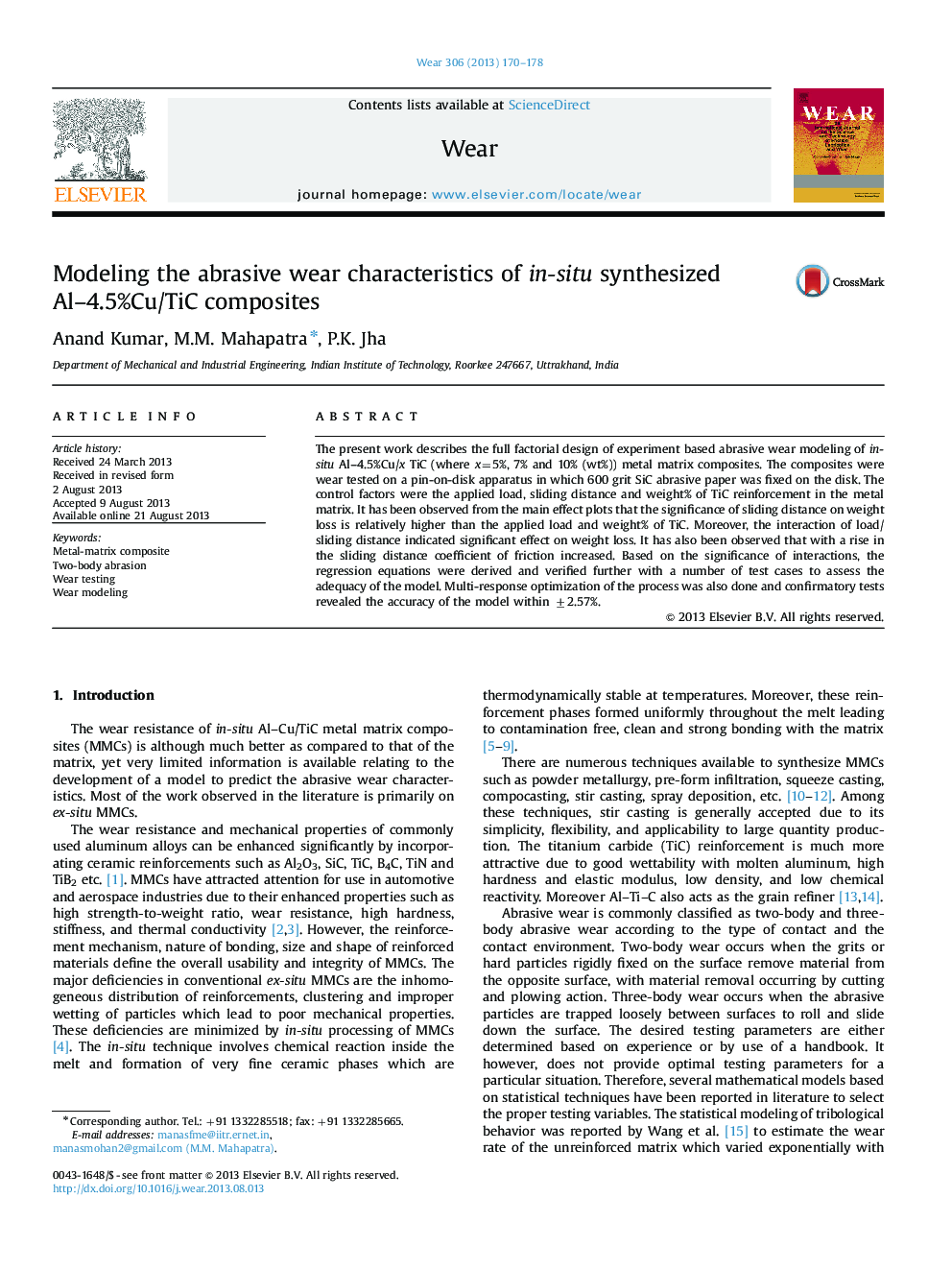| Article ID | Journal | Published Year | Pages | File Type |
|---|---|---|---|---|
| 617614 | Wear | 2013 | 9 Pages |
•Abrasive wear experiments of in-situ Al–4.5%Cu/TiC composites were conducted.•Full factorial experiments were done for all possible combination of control factors.•Based on the significance of control factors regression model was developed.•Interaction effects of factors and response optimization were studied.•Optimization confirmatory tests were also performed to validate the model.
The present work describes the full factorial design of experiment based abrasive wear modeling of in-situ Al–4.5%Cu/x TiC (where x=5%, 7% and 10% (wt%)) metal matrix composites. The composites were wear tested on a pin-on-disk apparatus in which 600 grit SiC abrasive paper was fixed on the disk. The control factors were the applied load, sliding distance and weight% of TiC reinforcement in the metal matrix. It has been observed from the main effect plots that the significance of sliding distance on weight loss is relatively higher than the applied load and weight% of TiC. Moreover, the interaction of load/sliding distance indicated significant effect on weight loss. It has also been observed that with a rise in the sliding distance coefficient of friction increased. Based on the significance of interactions, the regression equations were derived and verified further with a number of test cases to assess the adequacy of the model. Multi-response optimization of the process was also done and confirmatory tests revealed the accuracy of the model within ±2.57%.
